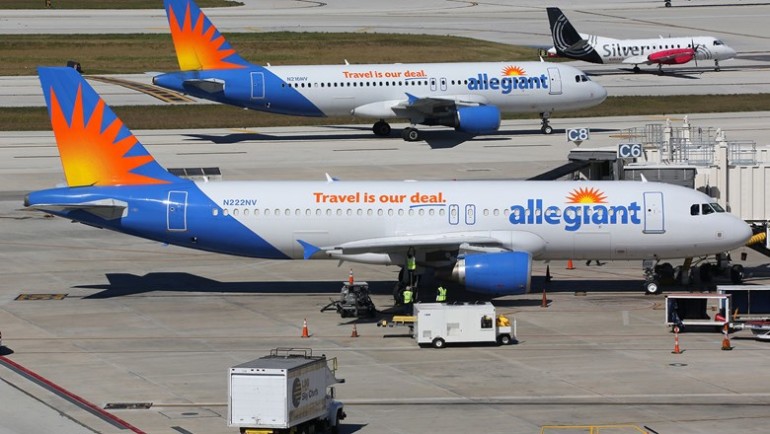Sponsored Listings:
Southwest and Delta are the major U.S. carriers best positioned to survive the Covid-19 crisis, according to analysts. And U.S. airlines in general entered the crisis in better shape than carriers in other parts of world.
But ultimately, numerous factors, including the willingness and ability of governments to prop up suffering carriers, will determine which airlines last through the downturn as well as which ones reach the other side of the crisis in the best shape to rebound.
In the U.S., airlines will benefit from $25 billion in federal grants, which were designed to pay workers through September. Another $25 billion in federally backed loans is also available for airlines, large travel agencies and aircraft maintenance firms, should private lending dry up.
That aid, wrote J.P. Morgan’s Jamie Baker in a March 25 analysis, “buys much-needed time for the industry but in no way solves the current crisis.”
As March headed into April, and not accounting for federal grant money, Southwest had more than eight months of cash on hand, according to a March 30 investment note from Bernstein analyst David Vernon, who worked under the assumption that airlines will lose 85% of daily revenue but will cut daily cash expenses by 40%.
Under the same formula, Delta had nearly six months of cash on hand, American had slightly more than two and a half months of cash and United had slightly less than two and a half months of cash.
Each airline also has somewhere between $10 billion and $20 billion of unencumbered assets against which they can borrow, with American on the lower end of that scale and Delta and United on the higher end.
Meanwhile, a Bloomberg Intelligence analysis found that low-cost U.S. carriers are generally prepared to cover costs for a longer period of time than the legacy airlines. Accounting for cash, credit lines and unencumbered aircraft, Bloomberg estimated that Allegiant, JetBlue, Spirit and Southwest all could cover costs for between 16 and 18 months, compared with an approximately eight- to 10-month range for United, Delta and American. That analysis also does not account for stimulus funding.
While an airline’s balance sheet is key, numerous other factors will determine a carrier’s fate during this unprecedented shutdown of the world travel industry, said Samuel Engel, an aviation industry analyst for the consulting firm ICF.
Among those factors, he said, will be the extent to which an airline’s key markets are impacted and how quickly they reopen.
“In the big competitive picture, does the airline look like a long-term player, making investors eager to lend?” Engel asked. “Will loans be backstopped by state aid or guarantees? Will business partners like credit card companies and leasing companies provide working capital? Will labor be a fixed cost or will it decline with reduced flying?”
As a rule, airlines have high fixed costs, which include lease payments at airports and financing or leasing costs for planes and staff, among numerous other variables.
Industry analyst Seth Kaplan said that airlines with more flexibility when it comes to costs will benefit from that now. He cited, as an example, Allegiant, which had a relatively modest $1.45 billion in debt as of March 31, according to Yahoo Finance, and a competitive debt-to-earnings ratio in comparison with other U.S. airlines.
In addition, Allegiant routinely scales substantially up and down in various markets, an ingrained nimbleness that could help it weather this crisis.
Counterintuitively, having an older fleet is also an advantage. The reason, Kaplan said, is that with older fleets, debt service will be less, leading to lower fixed costs as planes sit grounded.
One airline benefitting from that metric is Delta, which has an average aircraft age of more than 15 years, according to an analysis posted to the investors’ portal Seeking Alpha by freelance charter financial analyst Adam Levine-Weinberg.
Conversely, American has undertaken a major fleet renewal program since 2013 that has left it with an average aircraft age of 11 years. American spent $2.4 billion on aircraft leases and interest expense last year compared with just $724 million for Delta, Levine-Weinberg wrote.
Entering into the Covid-19 crisis, U.S. airlines actually had, on average, less cash liquidity than airlines in other regions of the world, according to an IATA analysis. Still, U.S. carriers as a whole have benefitted from being the most profitable in the world in recent years. In 2019, North American carriers accounted for 65% of total net profits for the global airline industry, IATA figures show.
Less consolidated airline markets, especially Europe, were experiencing failures even during the good times that preceded the outbreak. Already, since the crisis began, British regional carrier Flybe has folded.
Kaplan said further failures will likely come from carriers that, like Flybe, were weak or struggling to survive before the crisis. Candidates include South African Airways, which was already requiring state infusions as part of a restructuring, along with Thai Airways, Norwegian Air and Aerolineas Argentina, he said.
Alitalia has been in bankruptcy since 2017, but it won’t fail during the crisis because Italy has decided to nationalize the carrier.
Indeed, governments will be the ultimate wild card as airlines fight to survive. The resources of each particular country, as well as how vital a country deems a particular carrier to be, will play into airlines’ chances.
In that equation, a struggling legacy carrier such as Korean Air is in a better position than a weak secondary carrier such as Virgin Australia, Kaplan said.
Governments around the world have begun aiding their aviation sectors. As of March 31, Colombia, Singapore, Australia, China, New Zealand and Norway were among the countries that had joined the U.S. in providing financial or regulatory aid to airlines, according to IATA.
Source: travelweekly.com










